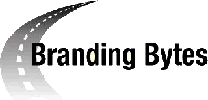
Issue 6, Spring 2007
Keeping Everyone on Brand Message
Q. How can we do a better job of keeping everyone in our organization on brand message?
A. It doesn't matter how good the choir is. If everyone is singing from different song sheets — it's just noise! The same holds true for an organization's brand. If everyone is sending out different messages, it confuses the audiences you are trying to reach. One of the best ways to keep everyone on message is to create a "messaging package."
A messaging package is simply a compilation of the core messages you want your brand to convey. Its purpose is to help you stay on message whenever you communicate information about your organization. A good messaging package answers the questions: Who are we? What do we do? How do we do it? And why should anyone care enough to support us. (NOTE: In my book, Branding for Success, I offer a five-step approach on how to actually go about creating your messages. Given limited space, here I will simply offer a brief description of each component of the package. For a more expanded view of message development, click on ABOUT.COM)
Your messaging package should include the following:
Tagline
A tagline is a catchy, quick-identifying reference, usually no more than five to seven words. A good tagline will trigger the imagination, interest and emotions of your target audiences. Think of Nike's "Just do it!" or the American Red Cross's "Together, we can save a life."
Your tagline should be incorporated into all your materials, including signage, stationery, banners, media materials, website, etc.
Positioning statement
A positioning statement is often referred to as an "elevator speech", something that can be delivered quickly to someone who knows little, if anything, about your organization. It is perhaps the most important component of your messaging package and should be short, compelling and to the point. For example:
"XYZ is a leading community-based nonprofit that helps place people into homes they can afford. Working collaboratively with others, last year we helped more than 200 families purchase their first homes and were responsible for more than $6 million worth of local economic activity."
When developing your positioning statement, keep in mind that its purpose is not to educate people about every program, service or product your organization offers. Rather it should be designed to interest them in your overall mission, to get them to care enough about what you do — and your importance to the community — so that they will want to learn more.
Supporting statements
Think of supporting statements as talking points to be included into your speeches, presentations, printed materials, website and elsewhere.
You can create three supporting statements; you can create dozens of supporting statements which can be selectively used to target different audiences.
Supporting statements may address:
- Your core values (i.e. caring and responsive to the needs of customers; reliable, trustworthy business partner; good stewards of public/private funding, etc.)
- The range of programs and services you offer
- The impact of your work on the people you serve, as well as the community, in general
- How long your organization has been in existence
In short, supporting statements are just that — they bolster the brand by providing additional facts about your organization to various targeted audiences.
Logo
Your logo is the design cornerstone that should give all of your materials a consistent look, style and feel so that people can identify immediately with your organization. (Think of McDonald's golden arches, Nike's swoosh, and the Red Cross's, well, red cross.)
In addition to being attractive and representative of your brand, think about the various ways you may use your logo and how difficult or expensive it may be to reproduce. Consider proportions, as well. A detailed logo that looks great on a large banner may not reproduce well when it is reduced small enough to fit on a business card. Also, how will it look in color, black and white, faxed, enlarged or reduced?
Your logo should be used uniformly and consistently on all your materials, including annual reports, brochures, flyers, report covers, press releases, video covers, etc.
Creating an effective messaging package will take some time, energy and resources. But if used consistently, it's a great way to get everyone singing from the same song sheet, a way to produce harmony instead of noise when it comes to explaining who you are, what you do, how you do it — and why anyone should care enough to support you.
As always, I look forward to receiving your feedback, questions, success stories and branding challenges. Also, if you are in need of a motivational speaker, trainer, branding consultant/coach, or management consultant who can help you answer the questions: Who are we? What do we do? How do we do it? And should anyone care? I invite you to for more information.
In the meantime, good luck with your branding! — Larry
About Branding Bytes
Branding Bytes is a FREE quarterly e-newsletter courtesy of Larry Checco of Checco Communications. Please feel free to forward Branding Bytes on to others. However, Branding Bytes is copyrighted and may not be reprinted or reproduced without attributing Larry Checco of Checco Communications as its source and providing the following website address: www.checcocomm.net. Thank you.
Privacy Policy: WE DO NOT SELL, RENT, OR LEND THE E-MAIL ADDRESSES OF OUR SUBSCRIBERS!
To receive Branding Bytes email

